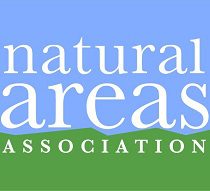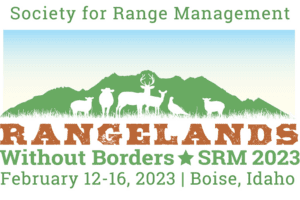Invasive Species
View article.
Interactions among species can strongly affect how plant communities reassemble after disturbances, and variability among native and invasive species across environmental gradients must be known in order to manage plant-community recovery. The stress-gradient hypothesis (SGH) predicts species interactions will be more positive in abiotically stressful conditions and conversely, more negative in benign conditions, and the resistance-resilience concept (RRC) may predict where and when invasions will complicate ecosystem recovery. We evaluated how abiotic stress and biotic interactions determine native bunchgrass abundances across environmental gradients using additive models of cover data from over 500 plots re-measured annually for 5 years as they recovered naturally (untreated) after a megafire (>100,000 ha) in sagebrush steppe threated by the invasive-grass and fire cycle.
View article.
Thus, to understand the effects of removing contemporary grazing, we compared contemporary grazed areas to long-term (+10 yrs.) grazing exclusion areas in three common Wyoming big sagebrush community types: intact, degraded, and exotic annual grass-dominated types. Plant community characteristics (cover, density, diversity, richness, dissimilarity) were measured in 2020 and 2021 in five grazed and grazing excluded areas within each community type. Most plant community characteristics were not influenced by grazing exclusion, suggesting that the removal of contemporary grazing has little effect on Wyoming big sagebrush plant communities. The effect of grazing exclusion on Sandberg bluegrass abundance and litter cover varied among community types, suggesting that grazing exclusion effects slightly varied among community types. In contrast, most plant community characteristics varied among community types and between years, suggesting that grazing management plans need to account for the spatial and temporal variability among Wyoming big sagebrush communities. Furthermore, our results suggest that contemporary grazing exclusion has negligible effects compared to contemporary grazing on plant communities, and that exclusion of contemporary grazing (passive restoration) does not promote the recovery of degraded and annual grass invaded plant communities.
View article.
We evaluated how abiotic stress and biotic interactions determine native bunchgrass abundances across environmental gradients using additive models of cover data from over 500 plots re-measured annually for 5 years as they recovered naturally (untreated) after a megafire (>100,000 ha) in sagebrush steppe threated by the invasive-grass and fire cycle. The species included native bunchgrasses, bluebunch wheatgrass and Sandberg bluegrass, and the exotic and invasive annual cheatgrass. We asked whether associations between native bunchgrasses and cheatgrass were context dependent and if the SGH could help predict interspecific associations between species in a semiarid environment. The association of cover of each native bunchgrass to cheatgrass was not uniform, and instead varied from neutral to negative across environmental gradients in both space and time (i.e., weather), to which the species had nonlinear and sometimes threshold-like responses. Consistent with the SGH, bunchgrasses were generally more negatively related to cheatgrass (i.e., putative competition) in conditions which increased the cover of each bunchgrass – which were higher elevations and temperatures and lower solar heatload, and, for Sandberg bluegrass, drier conditions. There were few indications of positive interactions (i.e., putative facilitation) in stressful conditions, and instead associations were again negative, albeit weaker, in some of the conditions evaluated. Synthesis. These findings demonstrate that the negative association among native bunchgrasses and cheatgrass is context dependent and is determined by the abundances of both interacting species which is driven by environmental stress. This led to a hypothesis that together Sandberg bluegrass and bluebunch wheatgrass provide complementary resistance to cheatgrass at the landscape level, despite their different ecology and contrary to the management preference for bluebunch wheatgrass. Sandberg bluegrass might be critical for providing resistance against cheatgrass where invasion potential is greatest, i.e., at lower elevations, where bluebunch wheatgrass is scarce.
View article and additional details and infographics on this study.
We found widespread increases in cover and production of annual grasses and forbs, declines in herbaceous perennial cover, and expansion of trees. Cover and production of annual plants now exceed that of perennials on > 21 million ha of BLM rangeland, marking a fundamental shift in the ecology of these lands. This trend was most dramatic in the Western Cold Desert of Nevada and parts of surrounding states where aboveground production of annuals has more than tripled. Trends in annuals were negatively correlated with trends in bare ground but not with trends in perennials, suggesting that annuals are filling in bare ground rather than displacing perennials. Tree cover increased in half of ecoregions affecting some 44 million ha and underscoring the threat of woodland expansion for western rangelands. A multiscale variance partitioning analysis found that trends often varied the most at the finest spatial scale. This result reinforces the need to combine plot-level field data with moderate-resolution remote sensing to accurately quantify vegetation changes in heterogeneous rangelands. The long-term changes in vegetation on public rangelands argue for a more hands-on approach to management, emphasizing preventative treatment and restoration to preserve rangeland habitat and functioning. Our work shows the power of new remote-sensing tools for monitoring public rangelands and developing effective strategies for adaptive management and conservation.
View article.
This study expands on a 2011 tribal research needs assessment with a survey to identify tribal natural resource professionals’ research needs, access to research findings, and interest in participating in research. Information needs identified in our survey includes forest health, water quality, culturally significant species, workforce and tribal youth development, cultural importance of water, and invasive species. Additionally, postfire response and valuation, resilience and long-term forestry, protecting and curating tribal data, and Indigenous burning were more important research needs for tribal members than for nontribal members. This study can inform forestry research planning efforts and establish research priorities and collaborations that are aligned with needs identified by tribal natural resource managers.
View article.
We measured the presence of greater sage-grouse (GRSG) scat and modeled the probability of GRSG presence (PrGRSG-scat) in relation to variation in plot-level and landscape-level predictors, and land treatments, in an intensive, repeat sampling from 2017 to 2020 of 113,000 ha area burned in 2015 in the Soda Megafire (Oregon and Idaho, U.S.A.). GRSG scat was present in less than 200 of more than 8,000 observations, as would be expected for a philopatric species (i.e. high fidelity to home site) returning to degraded habitat. PrGRSG-scat was positively associated with sagebrush presence at the plot level and was positively related to elevation, lower-angle slopes, and proximity to sagebrush seedling outplant islands. The statistical significance of relationships of PrGRSG-scat to restoration treatments was marginal at best, with the largest effect being a positive response of PrGRSG-scat to pre-emergent herbicide sprayed to reduce exotic annual grasses. More time may be required for restored sagebrush steppe to meet GRSG needs or for GRSG to “adopt” the restored vegetation. Moreover, whereas scat is a convenient and non-invasive method to monitor GRSG, its post-fire scarcity weakens the strength of statistical inference on GRSG recovery patterns and response to restoration.
Visit conference website.
This year’s annual conference will be in Boise, ID.
View article.
Field surveys revealed that bare-soil exposure decreased >20% over the 14 years owing to biomass accumulation, but this was primarily due to large increases in exotic annual “cheatgrass” (Bromus tectorum, +1.8-fold) and the litter it produces (+1.5-fold). Soil biocrusts increased 11.9% and perennial bunchgrasses increased 3% over the 14 years. These community changes varied at the patch scale and entailed inverse relationships of (1) both cheatgrass and biocrusts to plant-community basal cover, (2) cheatgrass to both biocrusts and perennial grasses, and (3) biocrusts to cheatgrass and litter. The spatiotemporal variability in vegetation constituted changes in plant-community states, according to cluster analysis. The modeled probability of a community transitioning to a cheatgrass state was (1) strongly and positively related to the initial (2007) cover of cheatgrass in hotspots where initial cheatgrass cover was >20%, and (2) negatively related to biocrust cover where initial biocrust cover was >4% of ground area. The decision space for this landscape can be framed as a shifting from acceptance towards resisting further degradation by removing livestock and their trampling of soil surfaces and utilization of perennial herbs. However, cheatgrass appears to be the most impactful agent of change and continued invasion appears imminent. Active restoration may help resist further degradation and direct change towards tolerable conditions
Webinar recording.
This presentation shares results from a recent region-wide field survey of sagebrush rangelands in Oregon and Idaho, where we examined drivers of annual grass invasion at local and regional scales, and how grazing intensity at different scales can interact with environmental determinants of vegetation.





